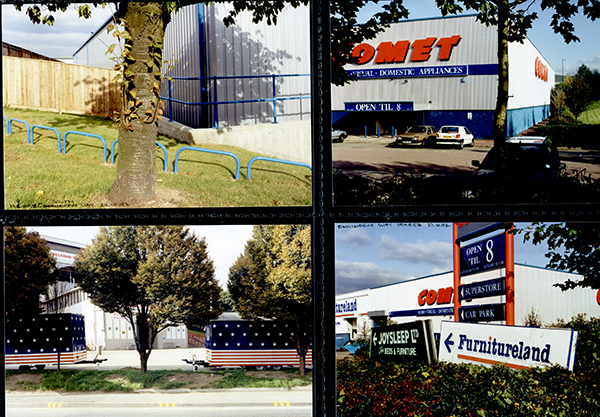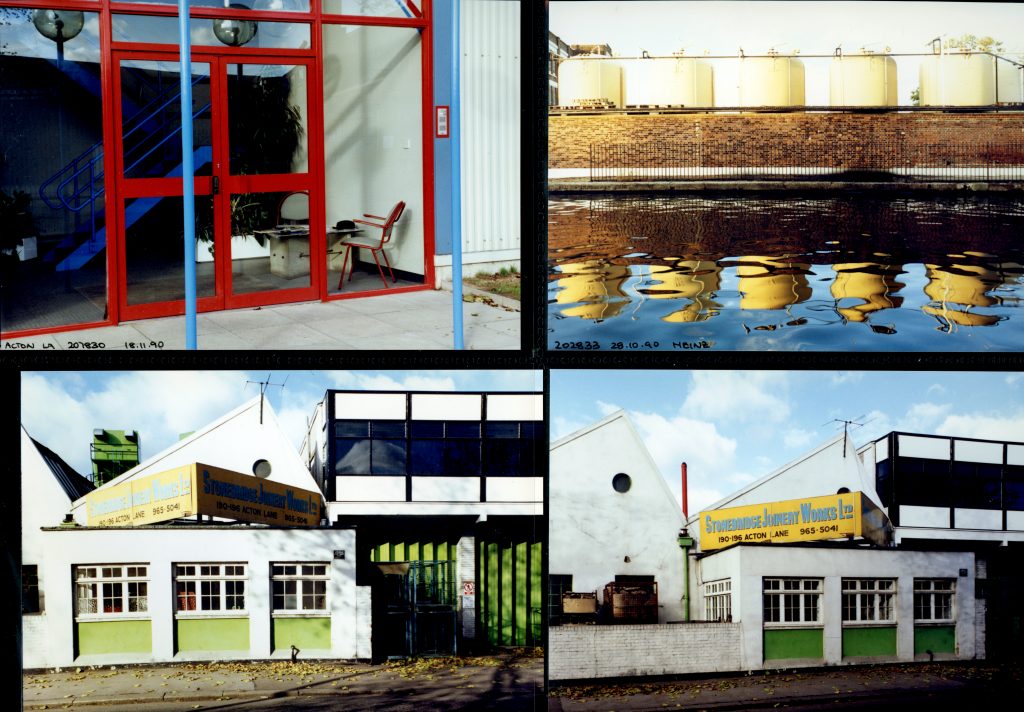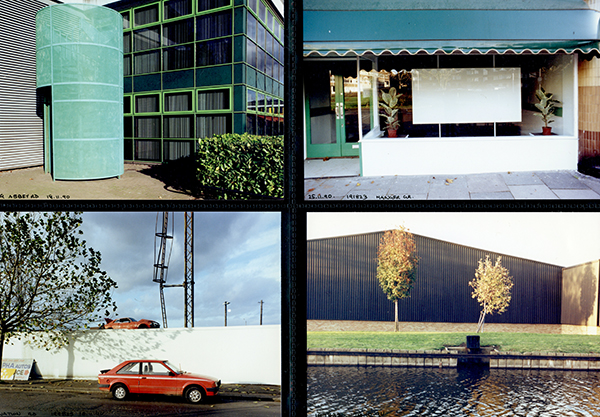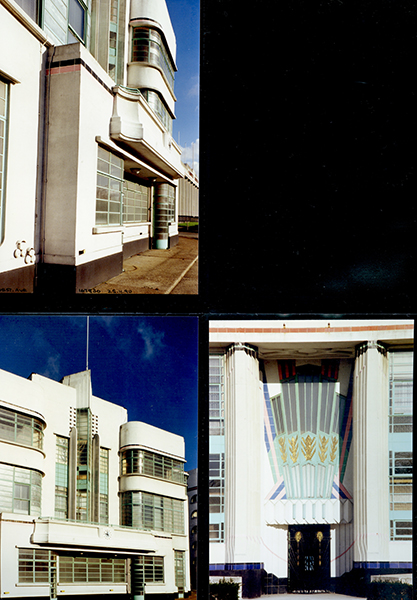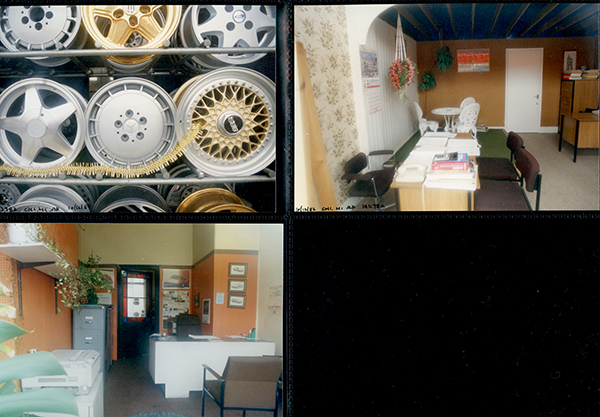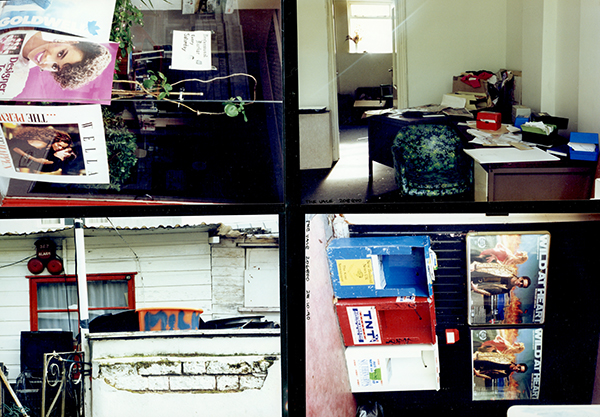There are many pictures on the fourth and last page of my album TQ31 London Cross-Section I’d like to show you and say a little about, though in most cases they need little text, but it can sometimes add interest. But my time is limited and I’ll leave you to discover most of them for yourselves.
I think Andreas’s Barber Shop on the Hornsey Road had probably ceased trading by the time I took this picture, as there is no light bulb in the socket just to the left of the centre of the window. There is a notice in the door that gives its opening times, but where it says ‘Closed’ I think this may have been permanent.
As I was still working full-time, many of my pictures were made at the weekend, often like this one on Sunday mornings, when most shops would have been closed. The building is still there, but not the shop or its shopfront; the whole row of shops present when I was taking pictures has now been converted to residential use.
Rather to my surprise, this industrial/commercial building is still there on Drayton Park, and, at least until recently, the name ‘HOO HING LTD’ was still present above the doorway. The company still exists and is an importer of oriental food and catering products, but the site was reported as due to be cleared in 2006 for housing. However in 2019 it was still there; like many redevelopments it may have been halted by the financial crash.
Sisters Gowns was at the rear of a property at 216 Seven Sisters Road in Finsbury Park and this door was on Coleridge Rd. The property was demolished in 2008 (the sign had gone earlier), but the site was still empty in 2019.
Fonthill Rd in Finsbury Park, apparently known to locals as ‘The Font’ is possibly London’s best ‘fashion village’. On weekdays the trade is (or at least was) largely for the trade, but on Saturdays it becomes a busy retail fashion area, often packed with women on the lookout for a bargain. Fortunately most of the shops were closed when I went to take pictures on a Sunday morning.
A unisex hairdressers at Turnpike Lane excited me in my hunt for heads, with a couple of fine examples as well as some photographs. I think I took rather more pictures than the three you can see here. A recessed doorway meant I could work from several angles.
Close to Turnpike Lane, down West Green Road, I came across another interesting shop window for a tailor’s shop, offering best styles made to measure at local prices. Working with a single lens reflex camera with its through the lens view meant that I could clearly see how the reflection and direct view combined, and could make small movements and sometimes deliberate shading to control the effect.
TQ31 London Cross-Section includes almost 400 pictures made in a small sliver of London, just a kilometre wide, which reflect the different areas it passes through from Norwood in the south to Wood Green in the north. The pictures come from just one of around a dozen such albums containing colour pictures I took when working around London between 1986 and 1992.
All photographs on this and my other sites, unless otherwise stated, are taken by and copyright of Peter Marshall, and are available for reproduction or can be bought as prints.


















